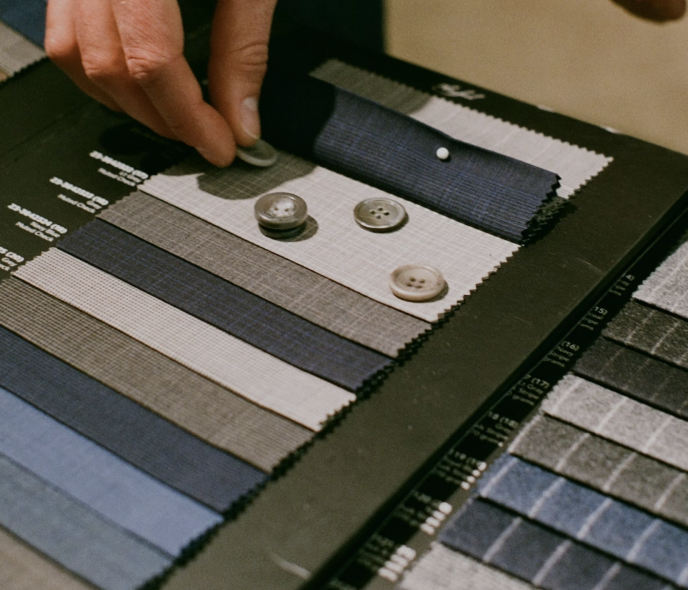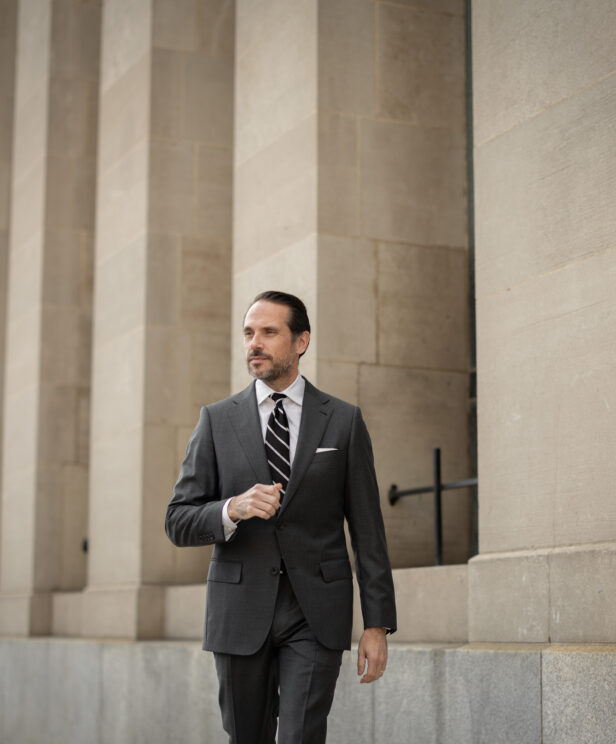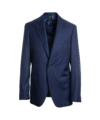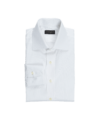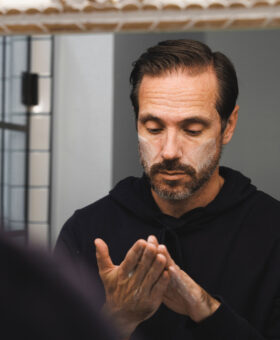
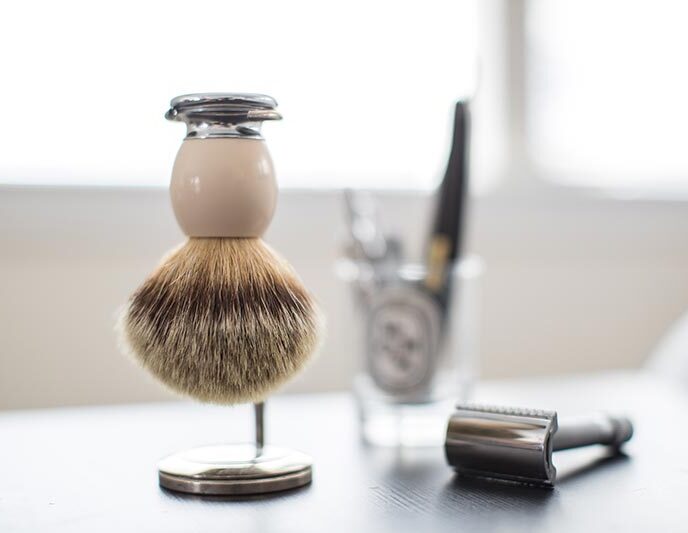
Share
What to look for when you’re picking out a shaving brush
If you’re thinking about adding a shaving brush to your grooming routine, you probably have some questions. Why use one? What are the different kinds of shaving brushes (because there are many)? And which shaving brush is right for you?
Here’s a quick primer to help you make the best decision.
Why Use a Shaving Brush?
Three reasons:
1. It creates a thick and rich lather.
2. It helps to soften and lift the beard hair.
3. It gently exfoliates the skin.
Actually, here’s a fourth reason: to slow down and enjoy the process of shaving. While the first three points have a very practical benefit to the actual shave you get and the health of your skin, the fourth is my personal favorite.
DON’T MISS: How To Shave With A Safety Razor
Does it take longer to shave this way? Yes, it does. But isn’t it nice to slow down a bit at least once a day?
Types of Shaving Brush Bristles
Boar. Firm and coarse. These qualities make it a little uncomfortable on the skin, but also make it easy to get a good lather out of a shaving soap puck. Omega makes one of the most popular boar hair shaving brushes.
Horsehair. Softer than boar, though not as soft as badger. You don’t see horsehair brushes that often.
Synthetic. Synthetic brushes have advanced a great deal. In some cases, you’d be hard-pressed to feel the difference between a synthetic brush and a quality badger brush. If you’re a vegan and/or passionate about animal rights, consider a synthetic.
Badger. One of the most classic and most-used hairs for shaving brushes. You will find them in four different gradations, listed here in ascending order of quality, softness and price: pure badger, best badger, super badger and silver tip.
Types of Shaving Brush Handles
Shaving brush handles can be made from one of these four materials: metal, wood, horn or synthetics. Each has a very specific look and feel. Choose based on what you like the look and feel of best.
Knot Size and Loft Height
The knot size will usually – though not all the time – determine the width of the handle. I say not all the time, because different handles can be thicker because of the materials and not necessarily the size of the knot.
The loft height refers to the entire length of the brush, from base to tip.
Both are matters of personal preference.

Which Should You Choose?
If you’ve just started considering using a shaving brush, first buy an inexpensive one to see if you even like the process of using it. Shaving with a shaving brush is definitely more time consuming than not using one, but anyone who uses one regularly enjoys that process.
I’ve known many guys who like the idea, but not the process. They eventually give up and go back to their electric shavers.
If and when you do decide a shaving brush is for you, buy one that:
1. You can afford, and;
2. that feels good in your hand.
Both points are important, but how it feels is a key factor. If you don’t like how the brush feels in your hand, you are less likely to use it on a daily basis.
Go to a reputable barber shop and get a feel of several different sizes and materials. Choose with what you like best.
Our recommendation: Parker Super Badger Shaving Brush, $39
Travel Shaving Brushes
One note about travel brushes. Some brushes marketed specifically as travel shave brushes have bristles that can be unscrewed and stored in the handle – usually made of metal – to form a nice, sleek little tube.
I used to own one of these. It was an Edwin Jagger. I would link to the one I had, but it seems they’ve updated the design slightly since I had one. Which is good because hopefully there have been some improvements.
The problem I had with mine was that the bristles were so close together that it never dried out sufficiently, even when left out for an extended period of time. This led to mildew on the brush, a bad smell and some rusting on the handle.
I find it easier to travel with my regular brush. Keeping the bristles in good condition is easily achieved by placing the brush in a cardboard toilet paper tube, which has the dual effect of wicking moisture if the brush happens to be a little wet.
Thanks for reading.
Stylishly Yours,
Brian Sacawa
He Spoke Style
Photography by Rob McIver Photo





